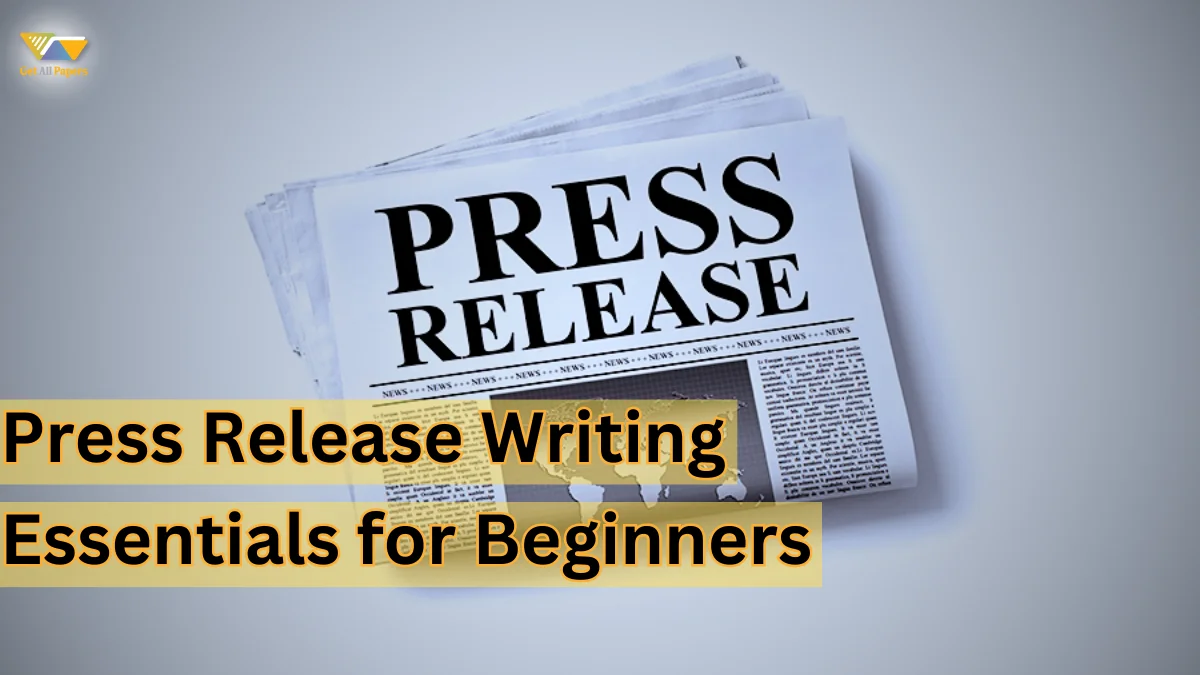
Press Release Writing Essentials for Beginners
Written By: Lisa W. French
Published On: July 09,2023
Introduction
In the fast-paced world of modern communication, the press release remains a powerful tool for businesses and organizations to spread their message far and wide. Whether you're launching a new product, announcing a partnership, or sharing a significant achievement, a well-crafted press release can attract media attention and effectively convey your news. If you're new to the world of press release writing, fear not! In this article, we'll guide you through the essential elements that every beginner should know.
1. Understanding the Purpose of a Press Release
At its core, a press release is a written communication that informs journalists and media outlets about a specific event, announcement, or development related to your company. The ultimate goal is to generate media coverage, build brand visibility, and engage your target audience. As a beginner, it's crucial to grasp the primary purpose of a press release: to provide newsworthy information that grabs the attention of journalists and encourages them to share your story.
2. Crafting a Compelling Headline
The headline is the first thing journalists will see, so it needs to be attention-grabbing and concise. Use strong, action-oriented language that conveys the essence of your news. Keep it short, ideally under 100 characters, to ensure it's easy to digest and share on social media platforms. A well-crafted headline can make the difference between your press release being read or ignored.
3. Writing an Engaging Lead Paragraph
The lead paragraph, also known as the "lede," should succinctly summarize the most important aspects of your news. Think of it as an elevator pitch – you have just a few sentences to capture the essence of your press release and entice readers to continue reading. Answer the basic questions of who, what, when, where, why, and how in this section.
4. Expanding on the Details
After the lead, delve deeper into the details of your news. Provide relevant information, such as statistics, quotes from key stakeholders, and any supporting facts that help give context to your announcement. Make sure your writing is clear, and concise, and avoids jargon that might confuse readers. Use the inverted pyramid style, placing the most critical information at the beginning and gradually moving to less crucial details.
5. Incorporating Quotes
Including quotes from relevant individuals within your organization can add authenticity and a human touch to your press release. Quotes can come from executives, spokespersons, or even customers who have benefited from your news. Keep quotes concise, impactful, and directly related to the announcement.
6. Including Multimedia
In the digital age, press releases are no longer limited to just text. Consider including multimedia elements such as images, videos, or infographics that enhance the visual appeal of your release. Visual content can help convey your message more effectively and increase the likelihood of your release being shared across various platforms.
7. Boilerplate Information
A boilerplate, also known as a company profile, is a brief section at the end of your press release that provides essential information about your company. This includes a brief description of your business, its mission, contact details, website, and social media links. While it might seem like a minor detail, a well-crafted boilerplate can serve as a gateway for journalists and readers to learn more about your organization.
8. Contact Information
At the conclusion of your press release, provide a contact person's information for media inquiries. This person should be knowledgeable about the news and available to answer questions from journalists. Include their name, title, email address, and phone number. Ensuring that this information is accurate and up-to-date is crucial, as media professionals may have follow-up questions or require additional information.
9. Adhering to Formatting Guidelines
Presentation matters. Format your press release properly by using a clear and professional font, such as Arial or Times New Roman. Use a standard font size (usually 12-point) and single-line spacing. Ensure your press release is free of grammatical errors and typos. A well-formatted and error-free press release reflects positively on your organization's attention to detail and professionalism.
10. Distributing Your Press Release
Once your press release is polished and ready, the next step is distribution. Consider using online press release distribution services that can help your news reach a broader audience. Additionally, reach out directly to journalists and media outlets that cover your industry or niche. Personalized pitches can increase the chances of your press release getting picked up.
Conclusion
Press release writing might seem intimidating for beginners, but with a clear understanding of its purpose and the essential elements, you can craft impactful releases that effectively communicate your news. Remember, the key is to make your news relevant, newsworthy, and engaging for both journalists and your target audience. As you continue to hone your press release writing skills, you'll find that it becomes an invaluable tool in your organization's communication strategy.
Related Posts
Popular Article

A guide to write a perfect essay
12.1.2023

A guide to write a rhetorical essay
20.1.2023

Explain the tricks to write a biography
27.1.2023




